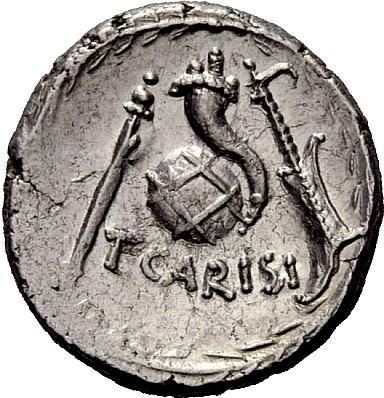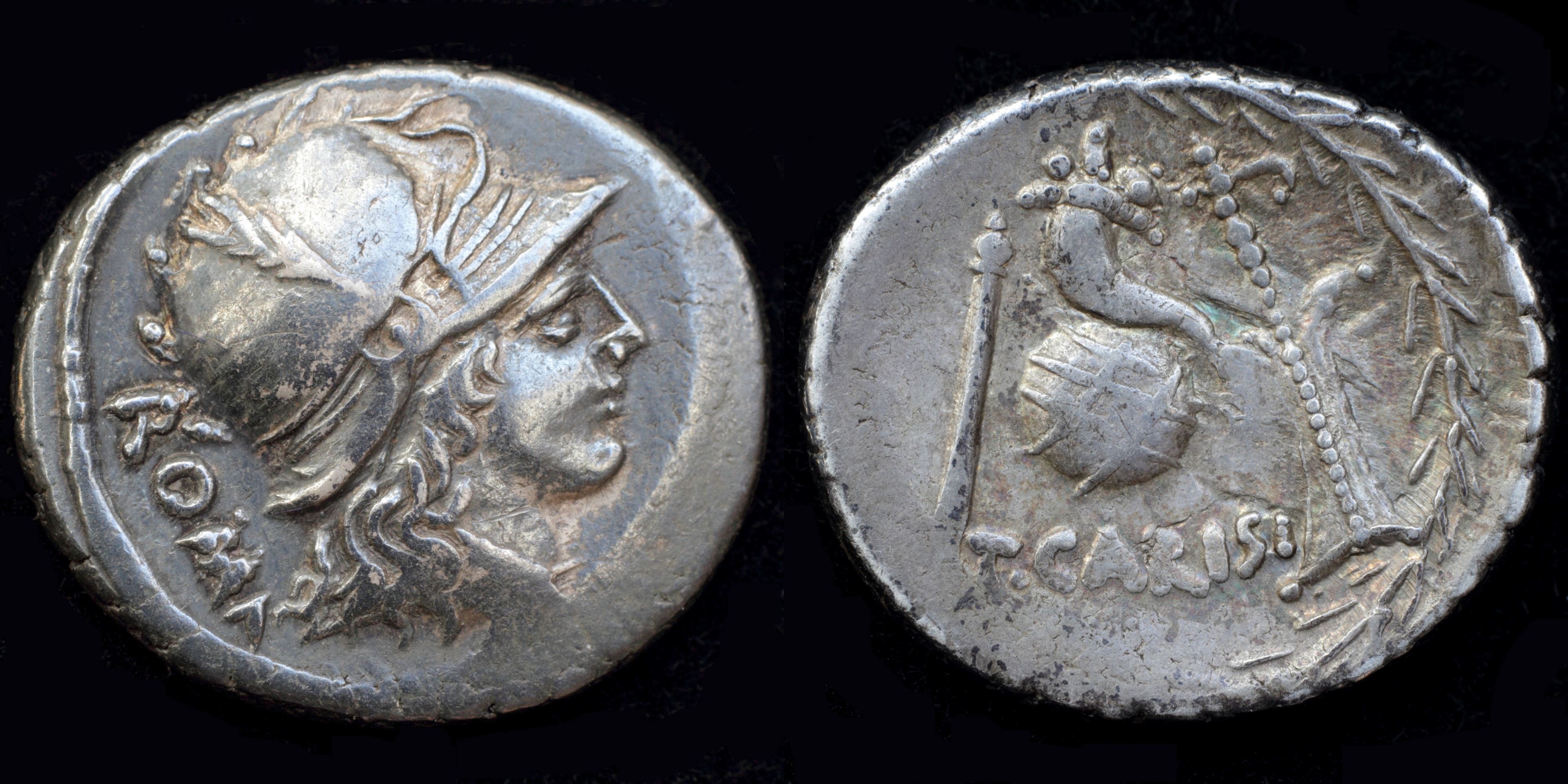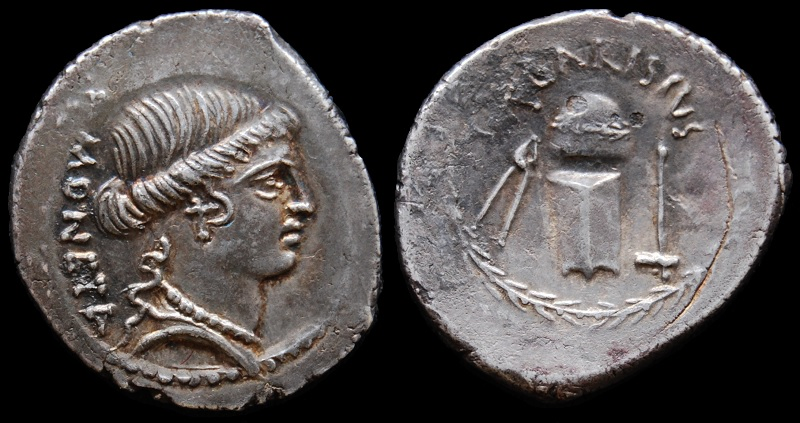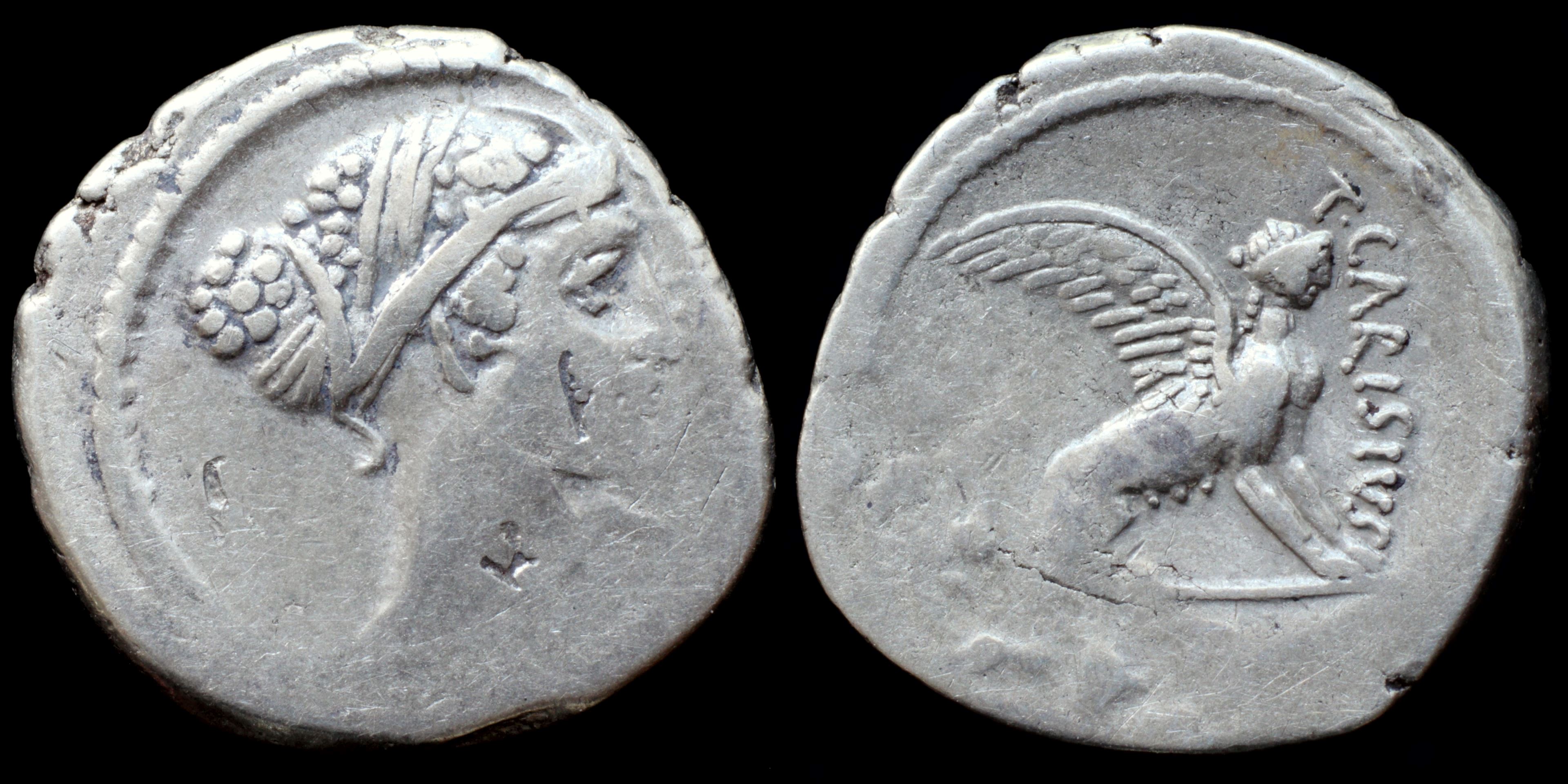Carisius is possibly identical to the Carisius who defeated the Astures in Hispania in 25 BC, and took their chief town, Lancia.
In consequence of his cruelty and insolence, the Astures took up arms again in 22.


Reverse: cornucopia on celestial globe, scepter left, rudder right all within wreath, T·CARISI
Die Orientation: -
Weight: 4.3 g

Reverse: Implements for coining money: anvil die with garlanded punch die above, tongs and hammer on either side; T•CARISIVS above; all within laurel wreath.
Die Orientation: -
Weight: 3.74 g
Provenance: Jesus Vico S.A, Auction 150 (1 March 2018), lot 414. Ex Herrero (25 March 1993), lot 78.

Reverse: sphinx seated right; T·CARISIVS / III·VIR
Die Orientation: -
Weight: 3.8 g

Reverse: Scepter, cornucopia on globe, and rudder; T • CARISI below; all within laurel wreath.
Die Orientation: -
Weight: 3.61 g
There are coins in which Titus Carisius is identified as triumvir monetalis, and another which mentions Publius Carisius, as legatus and propraetor, together with the word Emerita, apparently referring to the town of Augusta Emerita in Lusitania, which the emperor Augustus established for the emeriti, veterans of the war in Hispania. From this it has been conjectured that the praenomen Titus, assigned to the conqueror of the Astures by Cassius Dio, should instead be Publius.
Provenance: Triton XXII (9 January 2019), lot 912. From the Alan J. Harlan Collection, purchased from Freeman & Sear. Ex Numismatica Ars Classica 33 (5 April 2006), lot 339.

Reverse: Sphinx seated right; T • CARISIVS above, III • VIR in exergue.
Die Orientation: -
Weight: 3.8 g
Provenance: Ex Aureo & Calicó Auction 319 – Alba Longa, vol. I (7 November 2018), lot 223, Ex Sotheby's "Greek and Roman coins" (28 October 1993), lot 1385.
